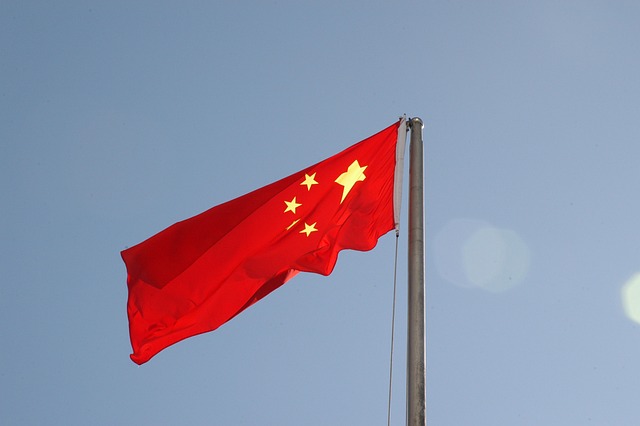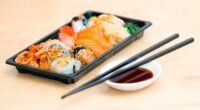Japan’s history is deeply rooted in ancient traditions and samurai warrior culture, while China has a long-standing civilization dating back thousands of years.
Historical Background of Japan

The historical background of Japan is a captivating tapestry woven with tales of emperors, samurais, and intricate traditions. Dating back to ancient times, the archipelago was inhabited by indigenous tribes before being influenced by neighboring cultures such as China and Korea.
Around the 6th century, Buddhism arrived from China, leaving an indelible mark on Japanese society. It not only shaped religious beliefs but also influenced art forms like painting and sculpture. The samurai era during the feudal period further defined Japan’s history, where warriors held immense power and adhered to strict codes of honor.
Japan’s isolationist policy in the Edo period (1603-1868) led to remarkable cultural development within its borders. This period saw the flourishing of traditional arts such as Kabuki theater, tea ceremonies, flower arrangement (ikebana), and calligraphy.
Modernization began in the late 19th century when Japan opened up to foreign influence. Rapid industrialization transformed it into a global powerhouse while preserving its unique heritage. Today, Japan stands at the forefront of technological innovation without losing sight of its rich past.
Historical Background of China

The history of China spans thousands of years, making it one of the oldest continuous civilizations in the world. From its early beginnings along the Yellow River to its modern-day status as a global powerhouse, China’s historical background is rich and diverse.
Ancient China was marked by several dynasties that ruled over vast territories with varying degrees of centralized power. The Xia, Shang, Zhou, Qin, Han, Tang, Song, Yuan, Ming, and Qing dynasties each left their mark on Chinese culture and society.
During the imperial era, China experienced periods of great prosperity and innovation. It was during this time that significant advancements were made in fields such as agriculture, technology (including papermaking and printing), literature (with notable works like “Dream of the Red Chamber”), philosophy (Confucianism became influential), art (with exquisite porcelain and intricate silk tapestries), architecture (the Great Wall stands as an iconic symbol), and medicine (the development of acupuncture).
China’s history also includes turbulent times marked by invasions from neighboring tribes like the Mongols under Genghis Khan or internal conflicts such as those seen during the period known as “The Warlord Era.” These events shaped the nation’s identity and influenced its political structure.
In more recent times after World War II until today’s People’s Republic government formation led by Chairman Mao Zedong followed by Deng Xiaoping opening up policy has laid foundation for economic growth which turns into what we see today – a country with a booming economy often referred to as “the world’s factory.”
China’s historical background is complex but fascinating. Its long-standing traditions continue to influence modern Chinese society while embracing rapid technological advancements. Understanding this rich heritage helps shed light on key differences between Japan and China in various aspects ranging from language to cultural practices.
Japanese Vs. Chinese – Key differences
| Aspect | Japanese Culture | Chinese Culture |
|---|---|---|
| Language | Japanese language | Chinese language (Mandarin is the most spoken) |
| Writing System | Hiragana, Katakana, and Kanji characters | Chinese characters (Hanzi) |
| Religion | Shinto, Buddhism, and other indigenous beliefs | Predominantly Buddhism, Taoism, and Confucianism |
| Social Hierarchy | Emphasizes group harmony and modesty | Values collectivism and family hierarchy |
| Cuisine | Sushi, sashimi, tempura, and ramen | Dim sum, Peking duck, and various regional dishes |
| Art and Aesthetics | Influenced by minimalism and nature | Features intricate calligraphy and paintings |
| Holidays | Celebrates festivals like Hanami and Tanabata | Notable for Lunar New Year and other festivals |
| Gestures | Bowing is a common greeting gesture | Handshakes and various non-verbal cues |
| Dress | Kimono and yukata are traditional attire | Traditional garments like qipao and hanfu |
| Architecture | Known for traditional wooden buildings | Features iconic structures like the Great Wall |
| Time Concept | Monophasic time orientation (present-focused) | Polychronic time orientation (past, present, future) |
Japanese Vs. Chinese – Language Differences
- Japanese: Uses three scripts – Hiragana, Katakana, and Kanji (borrowed from Chinese characters).
- Chinese: Primarily uses Chinese characters (Hanzi).
Phonetics:
- Japanese: Has a limited set of phonetic sounds.
- Chinese: Mandarin Chinese has a larger phonetic inventory.
Grammar:
- Japanese: Has a subject-object-verb (SOV) sentence structure and uses particles to indicate grammatical functions.
- Chinese: Generally follows a subject-verb-object (SVO) sentence structure with less explicit grammatical marking.
Tone:
- Japanese: Not tonal; emphasis is on pitch accent.
- Chinese: Mandarin is tonal, with four tones and a neutral tone.
Pronouns:
- Japanese: Has various levels of politeness in pronouns.
- Chinese: Pronouns are often used to indicate relationships, such as formal and informal forms.
Borrowed Words:
- Japanese: Incorporates loanwords from various languages, including English.
- Chinese: Also borrows words, but often retains the original pronunciation.
Kanji Characters:
- Japanese: Uses Kanji (Chinese characters) for nouns, verbs, and adjectives.
- Chinese: Employs Chinese characters as the core writing system.
Alphabetical Scripts:
- Japanese: Uses Hiragana and Katakana for native words and grammatical functions.
- Chinese: Does not use alphabetical scripts like Hiragana or Katakana.
Syllables:
- Japanese: Has a limited number of syllables.
- Chinese: Mandarin has a larger number of syllables.
While Kanji characters are a commonality, the linguistic structures and phonetics in Japanese and Chinese differ significantly.
Japanese Vs. Chinese – Cultural Traditions and Customs
Japanese Culture
- Bowing: Japanese people commonly greet each other with a bow, which varies in depth depending on the situation and relationship.
- Tea Ceremony: The traditional Japanese tea ceremony, or “chanoyu,” emphasizes etiquette, aesthetics, and the art of serving tea.
- Cherry Blossom Viewing: The practice of “hanami” involves appreciating cherry blossoms during the spring, often with picnics and gatherings.
- Kimonos: Traditional Japanese attire, such as the kimono and yukata, are worn on special occasions.
- Shinto and Buddhism: Japan’s religious landscape is shaped by Shinto and Buddhism, and many customs and rituals are associated with these belief systems.
- Seasonal Celebrations: Various festivals and rituals are held to mark the changing seasons, such as the New Year, Setsubun, and Obon.
Chinese Culture
- Chinese New Year: The Spring Festival or Chinese New Year is the most important traditional holiday, marked by dragon and lion dances, red envelopes (hongbao), and feasts.
- Confucian Values: Chinese culture places a strong emphasis on Confucian values, including respect for elders, filial piety, and hierarchy.
- Calligraphy and Ink Painting: Chinese art often includes calligraphy and ink painting, reflecting a deep appreciation for aesthetics and artistic expression.
- Dim Sum: Dim sum is a popular dining tradition, featuring a variety of small dishes served with tea, often in a social setting.
- Chinese Zodiac: The Chinese zodiac, with 12 animal signs, influences aspects of daily life, including compatibility and fortune-telling.
- Lantern Festival: The Lantern Festival, which marks the end of Chinese New Year, features the lighting of decorative lanterns and various activities.
While these are just a few examples, both cultures have rich and diverse traditions that reflect their unique histories, beliefs, and ways of life.
Japanese Vs. Chinese – Social Etiquette and Manners
Japanese Social Etiquette
- Bowing: Bowing is a common form of greeting and respect. The depth of the bow depends on the level of formality and familiarity.
- Removing Shoes: It is customary to remove shoes before entering a home, and often in some businesses and traditional ryokan (inns).
- Gift-Giving: Exchanging gifts is a common practice in various social situations. Gifts should be wrapped neatly, and it is polite to give and receive them with both hands.
- Tatami Etiquette: When sitting on tatami mats, it’s customary to sit cross-legged or in a specific manner and to avoid stepping on the mats with shoes.
- Silence and Politeness: Japanese communication often emphasizes politeness and maintaining harmony, which can include avoiding direct disagreement.
Chinese Social Etiquette
- Respect for Elders: Chinese culture places a strong emphasis on respecting elders. Younger individuals may greet older ones first.
- Seating Arrangements: Seating at a table is often based on hierarchy, with the most respected or eldest individuals seated first.
- Red Packets: Red envelopes (hongbao) with money are given as gifts on special occasions, particularly during Chinese New Year.
- Pouring Tea: It’s customary to pour tea for others before serving yourself, especially for older or more senior individuals.
- Face: “Saving face” is crucial in Chinese culture, meaning avoiding public embarrassment or confrontation.
- Table Manners: Chinese dining etiquette includes using chopsticks, not sticking chopsticks upright in a bowl, and not tapping utensils on the bowl.
Both cultures value politeness and respect, but the specific customs and gestures differ due to their unique cultural backgrounds and histories. Understanding and practicing these customs is essential when interacting with individuals from these cultures.
Image Credits
Featured Image By – マサコ アーント from Pixabay
Image 1 By – jorono from Pixabay
Image 2 By – PublicDomainPictures from Pixabay








